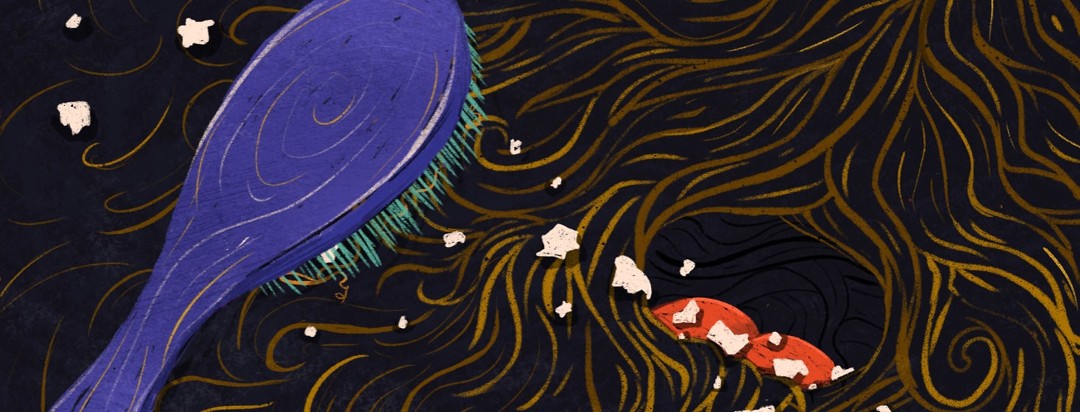Oh My! Scalp Psoriasis
"We have to shave your head!" These are the first words I can remember hearing at age 5 years when I was put in quarantine for my psoriasis. The psoriasis was so thick and packed on my scalp that my hair couldn’t be brushed or combed.
We were told a shaved head was my only option for my scalp treatment.
How does scalp psoriasis form?
When we first notice psoriasis it usually starts on some part of the head. There are even some people who only get scalp psoriasis.
If left untreated, new plaques can eventually appear on other parts of the body. The reasons why psoriasis affects the scalp are mostly due to thin tissue that forms on the outer layer of the body's surface.
What does scalp psoriasis look like?
Scalp psoriasis is also called seborrheic psoriasis. This term also includes other areas of the skin with a high density of sebaceous glands along with the ear area of the outer fold. The disease first appears as peels, that look like thick dandruff.
The forming of plaques is accompanied by itching, and the skin in this area is covered with silver-colored scales. Did you know that Winston Churchill suffered from psoriasis? He once vowed to make a monument of pure gold to a person who would find a cure for this disease.
Of course, as we all know now, there is no cure. Modern medicine has many resources that help to eliminate the symptoms of psoriasis and improve the quality of life for all of us affected. There are outward signs of the disease and sometimes it’s hard to cover up scalp psoriasis. Some of those sufferers will experience psychological discomfort.
What treatment options for scalp psoriasis?
I completed ultraviolet light treatment years ago to reduce my scalp psoriasis. Artificial light is a very popular way of treating the scalp. Each session usually lasts a few minutes and the entire treatment can last at least a few months or more. While this method worked, but it was time-consuming.
I also tried PUVA therapy, which involves the combination of phototherapy with photosensitizing agents. I was given medication in the form of a tablet before taking those treatments. This method is effective for scalp psoriasis and for severe psoriasis. I did this treatment for 10 years. Over time, it brought on other illnesses for me.
Natural treatments are always an option. I have heard many people talk about taking vacations to places with special weather conditions such as the mineral water of the Dead Sea coast. This may be suitable for longer periods of remission and relief of symptoms.
Several have pointed out the effect of using mud and herbal baths, and the use of oils and chemical compounds have proven productive in scalp healing. Of course, what might work for one will not work for everybody.
Why is it important to start treating scalp psoriasis as soon as possible?
Unfortunately, there is no cure yet. It’s possible to treat your scalp psoriasis at the first signs of a flare. In doing so, it is advisable to choose the right remedies.
It's important to learn the effects and analyze the safety of the medicine you are about to use. It’s always wise to consult a doctor before starting any new treatments.
Lifestyle changes that come with scalp psoriasis
We have all heard that changing our diets can help with our disease. Giving up alcohol, regular exercise, and psychotherapy can reduce anxiety levels. These are some things that might help improve the scalp.
Living a healthy lifestyle contributes not only to reduce scalp psoriasis symptoms but can also serve as an overall improvement in health which eliminating factors and comorbidities.
Do you live with scalp psoriasis? Tell your diagnosis and treatment story in the comments below.

Join the conversation